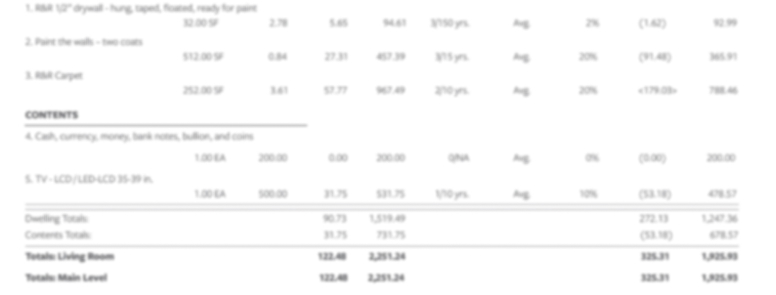In the world of real estate investment, understanding the concepts of fair value and market value can make a significant difference in your financial decisions. These terms, while related, hold distinct meanings that can affect how properties are evaluated, priced, and ultimately bought or sold.
Understanding the difference between fair value vs market value is crucial for making informed real estate investment decisions. Let’s delve into these concepts to empower you as a savvy investor.
Let us help you find your perfect property! Click below to schedule a consultation

Introduction to Fair Value vs. Market Value
Real estate investment requires a nuanced understanding of two critical concepts: fair value and market value. While both terms are used to assess the worth of a property, they approach valuation from different perspectives and serve distinct purposes in the investment process.
Fair Value
Fair value is an objective assessment of a property’s intrinsic worth based on a comprehensive evaluation of its physical characteristics, potential for development, and comparable sales data. It considers location, size, zoning regulations, and any unique features that could enhance or detract from its value over time. This valuation approach is typically employed by appraisers and investors who seek to understand the long-term investment potential of a property beyond current market conditions.
For example, for appraising a fair value of land, factors like its proximity to amenities, quality of soil, and topography are meticulously analysed to determine its fair value. This systematic assessment helps investors gauge whether the property has the potential for future development or appreciation based on its inherent qualities.
Market Value
The market value represents the price a property would sell under current market conditions. It reflects the interaction of supply and demand forces, economic trends, interest rates, and buyer preferences at a specific time. Market value is dynamic and can fluctuate based on changes in the local economy, housing market trends, and geopolitical events that influence investor sentiment.
When determining market value, real estate professionals often conduct a Comparative Market Analysis (CMA) to evaluate recent sales of similar properties in the area. This method provides insights into what comparable properties have sold for, helping to establish a competitive and realistic listing price or offer.
Key Differences and Implications: Understanding the difference between fair value and market value is crucial for real estate investors. Fair value emphasises a thorough analysis of a property’s intrinsic characteristics and long-term potential, making it valuable for investors interested in development projects or properties with unique attributes. Market value, on the other hand, is more immediate and guides pricing strategies and negotiation tactics based on current market conditions and buyer demand.

Understanding Fair Value
Fair value in real estate assessment involves meticulously evaluating a property’s intrinsic attributes and potential for future growth. This method considers critical factors such as the property’s physical characteristics, location advantages, zoning regulations, and its capacity for development, whether residential or commercial.
For instance, when appraising land, factors like its size, topography, soil quality, proximity to amenities, and existing infrastructure are meticulously examined to gauge its fair market worth. This comprehensive analysis helps investors and appraisers estimate a property’s long-term investment potential beyond its current market value, providing insights into its suitability for development or appreciation over time.
By focusing on these intrinsic qualities, fair value assessments assist stakeholders in making informed decisions about property acquisitions, development opportunities, and investment strategies aligned with their long-term objectives.
Explore this blog to know what is Market Value and hoe to calculate it?
WHAT IS THE MARKET VALUE OF LAND AND HOW TO CALCULATE IT?
What is market value of property? Market Value Dynamics
Market value is a dynamic concept in real estate that reflects the current economic environment and buyer preferences. Unlike fair value, which focuses on intrinsic qualities, market value responds directly to supply and demand dynamics, economic trends, interest rates, and the overall sentiment of potential buyers. This valuation method considers recent sales of similar properties (comps) to gauge what buyers are willing to pay for identical assets in the same market.
Local economic conditions, such as job growth, infrastructure developments, and demographic shifts, also influence market value by impacting demand for properties. Additionally, changes in interest rates can affect affordability and buyer behaviour, directly influencing property prices.
Understanding market value is crucial for investors and sellers alike. It allows them to set competitive listing prices, formulate effective marketing strategies, and negotiate favourable deals. Real estate professionals often use Comparative Market Analysis (CMA) to assess current market conditions and determine an optimal pricing strategy based on recent sales data and prevailing market trends.
Ultimately, grasping market value dynamics allows stakeholders to adapt their strategies in response to changing market conditions, maximising their opportunities for successful transactions and investments in the dynamic real estate landscape.
Differences Between Fair Value and Market Value
The primary distinction lies in their evaluation criteria: fair value relies on intrinsic factors and long-term potential, while market value is more immediate and responsive to current market conditions. This disparity can lead to variations in pricing strategies and investment decisions.
How to calculate market value of property?: Methods and Considerations
Calculating the market value of a property is a multifaceted process that utilises various methods tailored to the property type and current market conditions. These methods provide different perspectives on a property’s worth, allowing investors, appraisers, and real estate professionals to make informed decisions.
Comparative Market Analysis (CMA): This method widely estimates market value by analysing recent sales data of comparable properties in the same geographical area. By comparing key factors such as size, location, condition, and amenities, CMAs provide a benchmark against which the subject property can be evaluated. This approach is efficient in residential real estate markets and has sufficient recent sales to compare.
Income Approach: Income is crucial for valuing rental yields such as apartments or commercial buildings. It estimates the market value based on the property’s potential income stream. Appraisers consider rental rates, occupancy levels, operating expenses, and prevailing capitalisation rates to determine how much an investor would pay based on the property’s income-generating potential.
Cost Approach: The cost approach determines market value by estimating how much it would cost to replace or reproduce the property, adjusted for depreciation. It’s beneficial for new or unique properties with limited comparable sales data. This method considers land acquisition construction costs and subtracts depreciation based on the property’s age, condition, and functional obsolescence.
Each method provides valuable insights into a property’s market value, helping stakeholders make informed decisions regarding pricing, financing, and investment strategies. By combining these approaches or selecting the most appropriate one based on property type and market conditions, real estate professionals can accurately assess market value and optimise their investment outcomes in the competitive real estate market.

How to check market value of property?: Tools and Resources
Checking market value is essential for investors who want to make informed decisions about real estate. Professional appraisers are crucial in conducting detailed property inspections and comprehensive market analyses to provide accurate valuations. Their expertise ensures a thorough assessment considering property condition, location, and recent comparable sales.
Real estate agents also contribute by leveraging their local market knowledge and access to proprietary databases. They offer insights into current trends, buyer preferences, and competitive pricing strategies. Their expertise helps investors navigate nuances within specific neighbourhoods or property types, optimising investment strategies.
In the digital age, online valuation tools like Propertyok provide accessible resources for estimating market values. These platforms aggregate data from multiple sources, offering instant property valuations based on recent sales data, neighbourhood statistics, and predictive analytics. While convenient, it’s important for investors to interpret these estimates cautiously and supplement them with expert opinions for a comprehensive understanding of market dynamics and property valuation.
By leveraging these tools and resources, investors can confidently assess market values, refine their investment strategies, and capitalise on opportunities in the dynamic real estate market.
Case Study: Market Value of Property in Thane
Thane, a rapidly expanding suburb of Mumbai, presents an intriguing case study in real estate market dynamics. Its market value is intricately linked to several key factors: its proximity to Mumbai, ongoing infrastructure developments, and increasing demand for both residential and commercial properties.
The suburb’s strategic location, offering a more affordable yet connected alternative to Mumbai’s urban centre, enhances its attractiveness among homebuyers and investors. Infrastructure projects such as new roadways, improved public transport, and commercial developments further bolster Thane’s appeal, driving up property values.
Investors keen on Thane’s real estate market must grasp local dynamics and emerging trends to capitalise on opportunities effectively. Analysing demographic shifts, regional economic growth, and zoning regulations can provide critical insights into future property appreciation and rental yields. Additionally, staying abreast of market updates and leveraging comparative market analysis (CMA) tools can assist in evaluating competitive pricing strategies and making informed investment decisions.
In summary, Thane exemplifies how understanding specific regional dynamics can empower investors to navigate and capitalise successfully on evolving real estate markets.
Read this blog to know about Fair Value of Land in Kerala vs Mumbai
COMPARATIVE ANALYSIS: FAIR VALUE OF LAND IN KERALA VS. MUMBAI
Conclusion
In conclusion, distinguishing between fair value and market value is crucial for investors navigating the complex landscape of real estate. While fair value provides a fundamental assessment based on intrinsic qualities and potential, market value reflects current market dynamics and buyer perceptions. By understanding these concepts and employing strategic valuation methods, investors can maximise their returns and make well-informed investment decisions in the competitive real estate market.
Investing in real estate entails understanding the nuances of fair value versus market value, leveraging this knowledge to identify opportunities, negotiate effectively, and ultimately build a successful investment portfolio. Whether you’re evaluating the fair value of land or assessing the market value of a property in Thane, these concepts are indispensable tools for the savvy investor aiming to thrive in the dynamic real estate sector.
Frequently Asked Questions And Answers
1. What is the difference between fair value and market value in real estate?
Fair value objectively estimates a property’s intrinsic worth based on physical attributes, potential for development, and comparable sales data. On the other hand, market value reflects the price at which a property would sell in the current market, influenced by supply and demand dynamics, economic conditions, and buyer perceptions.
2. How is the fair value determined for a property?
A: Fair value is determined through a detailed appraisal process that considers the property’s location, size, zoning regulations, and potential for future development or use. Appraisers use a combination of methods, including comparative market analysis (CMA), income approach, and cost approach, to reach a balanced assessment.
3. What factors influence market value?
Market value is influenced by recent sales of similar properties (comps), local economic trends, interest rates, and buyer sentiment. External factors such as infrastructure developments, changes in demographics, and geopolitical events also significantly impact market values.

 Thank You
Thank You




